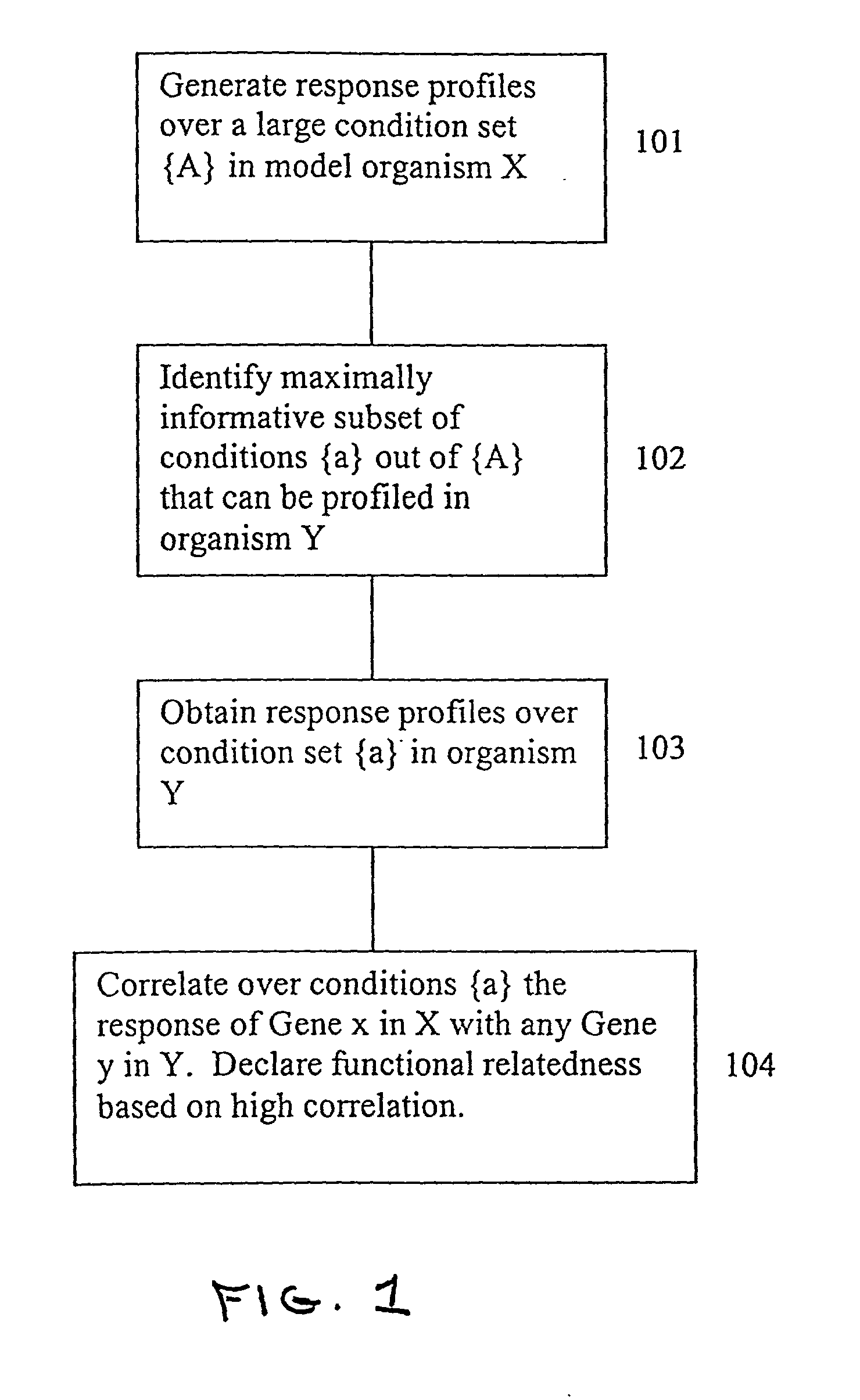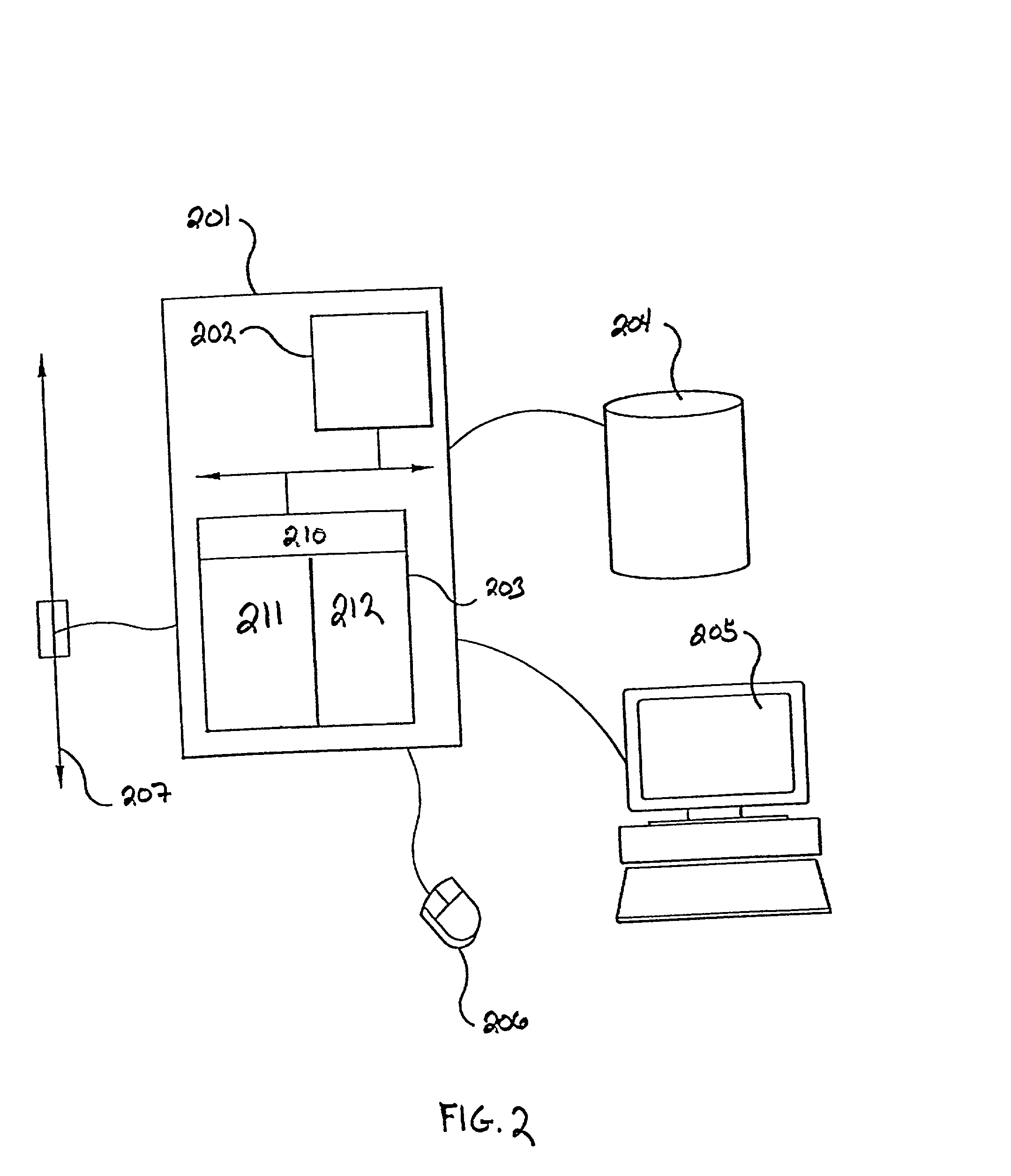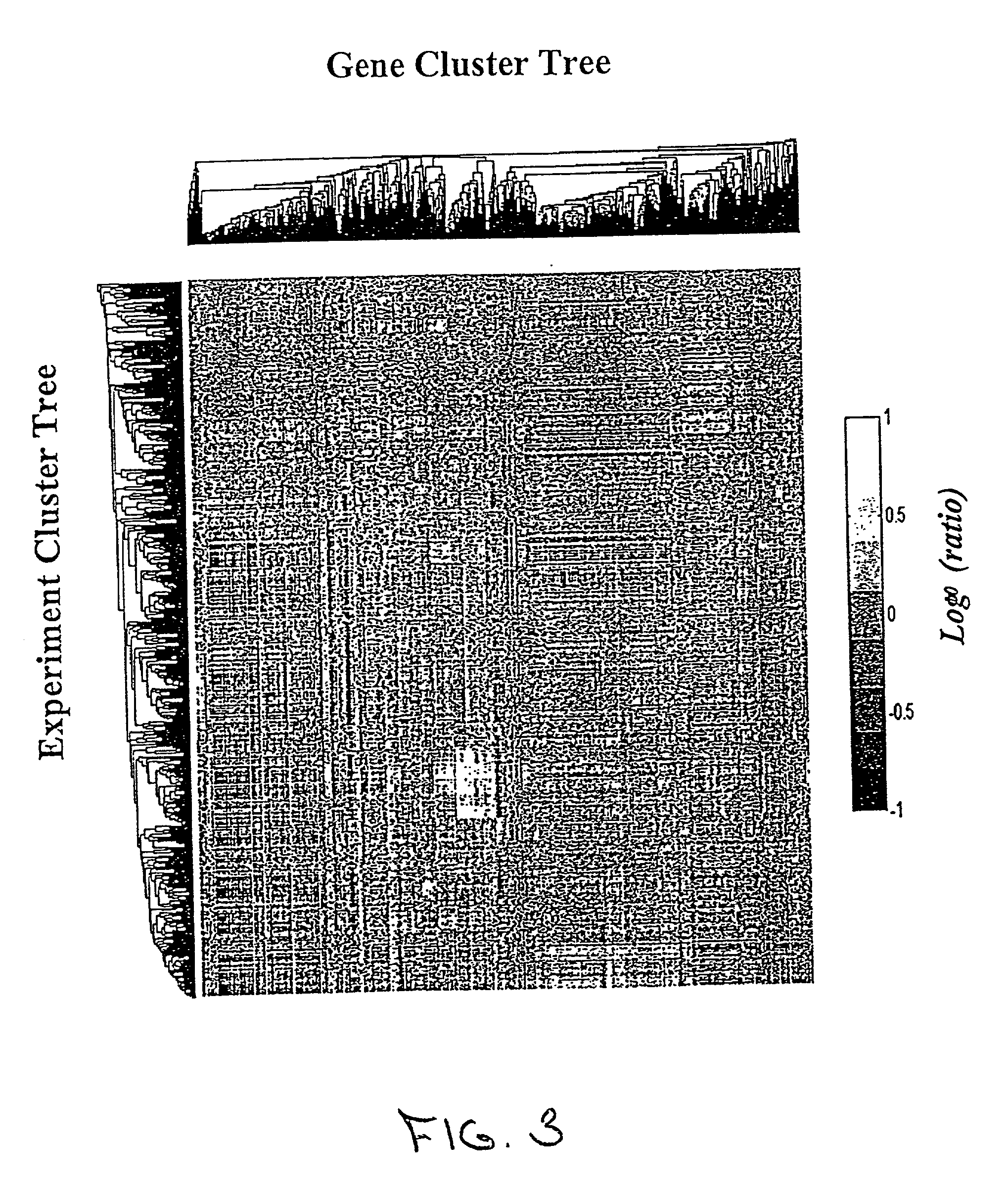Functionating genomes with cross-species coregulation
a technology of functional genomes and coregulation, applied in the field of characterization of genes and their gene products, can solve the problems that sequence homology can actually hinder the identification of functional homologs in many instances, and sequence homology in this instance will not be a reliable predictor, so as to achieve high degree of sequence homology, hinder the identification of functional homologs, and high throughput
- Summary
- Abstract
- Description
- Claims
- Application Information
AI Technical Summary
Benefits of technology
Problems solved by technology
Method used
Image
Examples
Embodiment Construction
[0030] This section presents a detailed description of the present invention and its applications. In particular, Section 5.1 describes certain preliminary concepts useful in the further description of the invention, including the concepts of biological state and co-varying sets of cellular constituents. Section 5.2 provides a general description of the methods of the invention, while Section 5.3 describes certain, preferred analytical systems and methods for performing the methods described in Section 5.2. Sections 5.4 and 5.5 provide exemplary descriptions of particular embodiments of the data gathering steps that accompany the general methods of the invention described in Section 5.2. In particular, Section 5.4 describes methods of measuring cellular constituents and Section 5.5 describes various targeted methods of perturbing the biological state of a cell or organism that can be used, e.g., to obtain the response profiles evaluated in the methods of the present invention. Final...
PUM
| Property | Measurement | Unit |
|---|---|---|
| Fraction | aaaaa | aaaaa |
| Fraction | aaaaa | aaaaa |
| Fraction | aaaaa | aaaaa |
Abstract
Description
Claims
Application Information
 Login to View More
Login to View More - R&D
- Intellectual Property
- Life Sciences
- Materials
- Tech Scout
- Unparalleled Data Quality
- Higher Quality Content
- 60% Fewer Hallucinations
Browse by: Latest US Patents, China's latest patents, Technical Efficacy Thesaurus, Application Domain, Technology Topic, Popular Technical Reports.
© 2025 PatSnap. All rights reserved.Legal|Privacy policy|Modern Slavery Act Transparency Statement|Sitemap|About US| Contact US: help@patsnap.com



